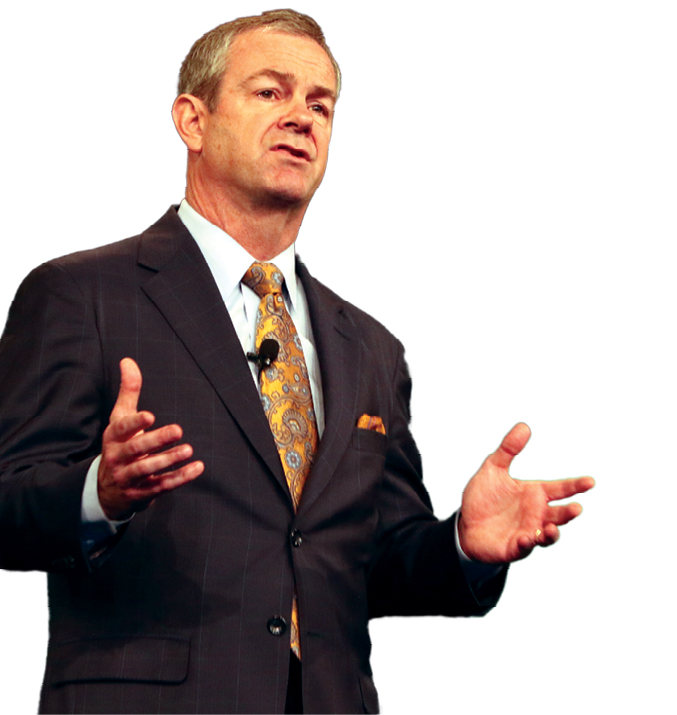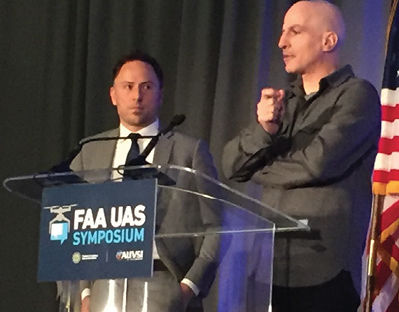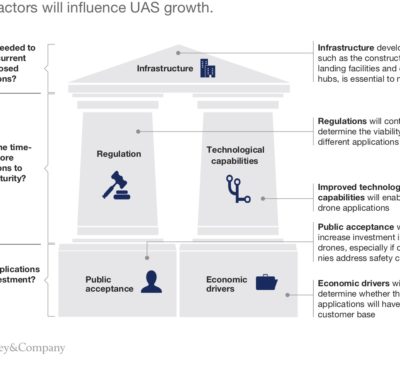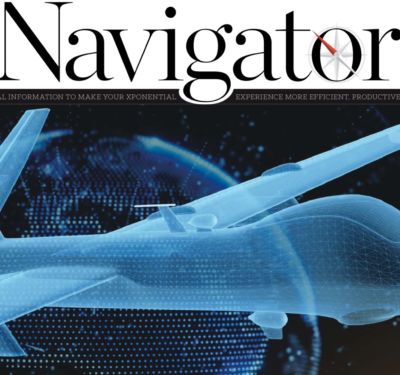
As president of the world’s leading association for unmanned technology Brian Wynne is helping speed automation by making sure technical solutions and lessons from across domains reach the desks of policy makers.
You’ve been at AUVSI now for more than three years. How is AUVSI different from what you expected?
I DON’T THINK IT IS A LOT DIFFERENT. You know you always find out different things about an organization when you get inside. I would say the organization is very different today than it was three years ago partly because the community has changed. But I expected the pace to be really brisk and it has been. The question that’s coming down the pipe that I feel most urgently, and I didn’t think it was going to come down the pipe this fast, is the question about autonomy–what’s our role in developing an autonomous future?
And of course we do all the domains. …The part I was wondering when I came in the door was: Is it one association or three because there are different constituencies–for the air side versus the maritime side versus the ground robots and automated vehicle side. But increasingly what I’m seeing is they’re starting to merge together under ‘How do we enable autonomy?’
How do you see AUVSI evolving, both as an organization and in its advocacy role?
THERE ARE ACTIVITIES GOING ON that go across these domains. And now the question becomes…can Secretary of Transportation Elaine Chao, (who) is really big on innovation, can she see along with us how these lessons can scale from one domain to another—and then we all get smarter. We gain insights and we all get smarter faster and society benefits from that technology getting in the mainstream quicker. That, to me, is the advocacy game.
Do you have some top priorities for the next few years?
THE PRIORITIES REALLY STILL BREAK DOWN along different regulatory domains and the air space is very differentiated—it’s very tricky. There’s a lot of work being done on small UAS and at the same time now we’re starting to get after some of the larger platforms that are going to be operating above 400 feet and all the way up in the upper air space. So that conversation is, I think, a very complex one and it’s moving along.
We just launched a fairly robust effort on maritime, as well, because increasingly in the maritime domain they’re beginning to realize a number of things. Number One: ‘Hey, UAS are really great to do inspections of hulls and all kinds of things that we need to do in the maritime domain’—but we also want to be able to use automated surface vessels to do safety checks and also security runs outside of ports and things like that. …Of course the military has been using both surface and subsurface vessels for quite some time and increasingly that will be the case in the future. But the commercial side is beginning to wake up to that as well, and so, like we did with the air side, we’re starting with the military side and then working our way (to) the commercial space. That transition will happen, or expansion will happen, a lot quicker on the maritime side. And then automated vehicles, they’re kind of a case to themselves right now. The big question being: how are the automobile companies going to play with one another? Are they going to do what they usually do, which is sell safety as a comparative advantage or are they actually going to collaborate and develop systems that are truly automated and interoperate with one another?
How do you see AUVSI contributing to the future of automated vehicles?
AUTONOMY I THINK IS CLOSER than it appears in the rear view mirror right now, but our role is going to be roughly the same I think. We have a strong convening capability where the thought leaders come together and put that vision out there and we have a lot of the technical expertise that’s required to be brought to the regulators. And we don’t expect the regulators to figure it out. Industry has to bring the solution forward and then collaborate with government to get it codified and in the regulations so that it can be used whether it’s on the road, on the waves, or in the air.
What are your top four priorities?
WELL FAA RE-AUTHORIZATION is right in front of us again. …That has got us all very focused because the idea here is to do one short extension and then maybe one that is more like a four-year extension. I sit on the Management Advisory Council now as well, so I understand much better the budgetary challenges that the FAA has, writ large.
On the tactical side we’re waiting on remote identification on the air side. Remote identification, it needs to be implemented quickly. We don’t know exactly how it’s going to be implemented. My perspective on this—(there’s) two important things about remote identification. One: that whatever is put in place, and we hope it will be quickly, that it is performance-based because we’ll get better at these technologies over time and you don’t want to be too prescriptive. And two, that it satisfies law enforcement. We can’t have the FBI saying, “Nope, that’s not good enough.”
In the maritime domain, there is, I think, a tendency on the part of, particularly the Navy, to spend its money on very large and exquisite and expensive programs and we will be working with them to try and change that approach. We think the better approach is to get more systems out there faster, put them in the hands of the sailors and have them help us iterate so that we can do a lot more things with unmanned systems particularly the things on the water. So that’s a high priority and that’s the reason why we set up our maritime Advocacy Committee and I would be remiss if I didn’t say I’m very focused on our big show, which stages April 30th through May 4th in Denver.
What do you see as the biggest opportunity for the unmanned industry across the domains?
I’M GOING TO GO REALLY STRATEGIC on you here—to completely change the way we move people and goods in the country. I’ll give you the airspace as an example. We have phenomenal amounts of congestion on the roads but phenomenal amounts of capacity right above our heads. And you take the most complex airspace in the world, like Washington, DC…hardly anything moves at night for noise abatement alone. So imagine drones that are virtually silent bringing you your e-commerce buy for the day in the middle of the night and delivering it on your lawn. Think about how many trucks we could take off the road. Because there are an increasing number of packages on those trucks that are being delivered thanks to e-commerce, which is just going to continue to accelerate, and they’re under five pounds. So enormous amounts of e-commerce packages could be delivered by a sidewalk robot. Changing the way we move people and goods is really the game






